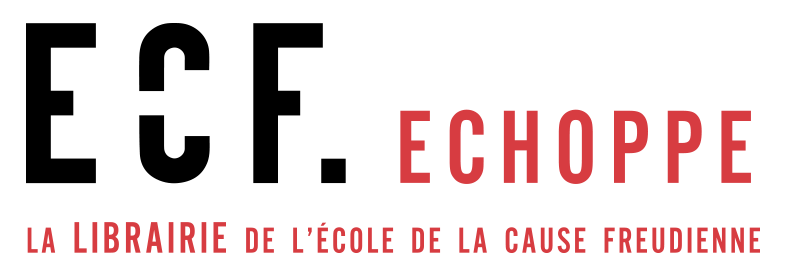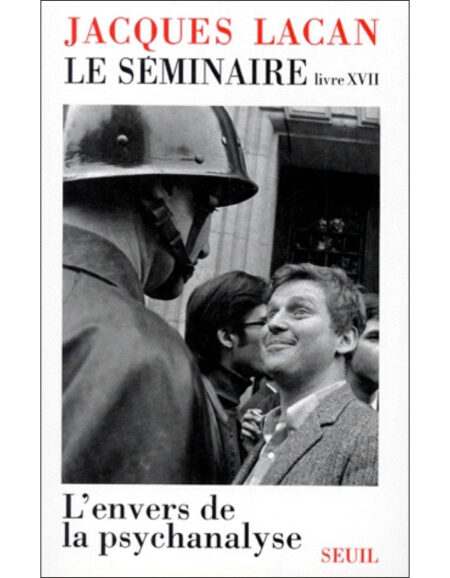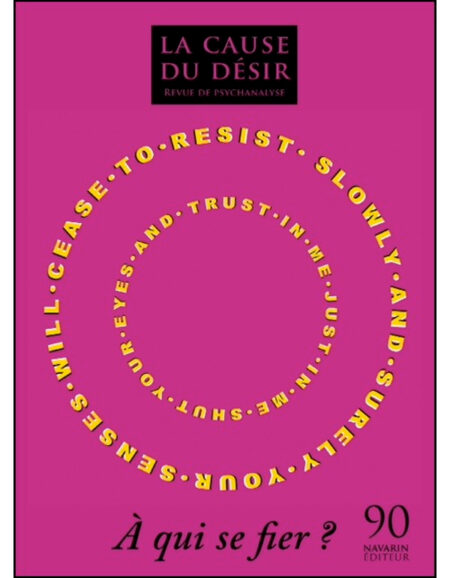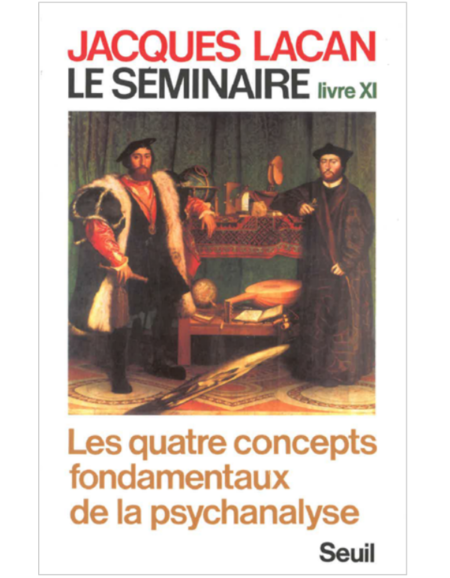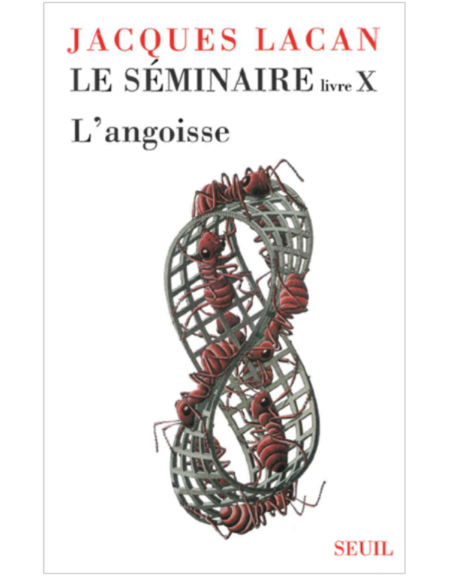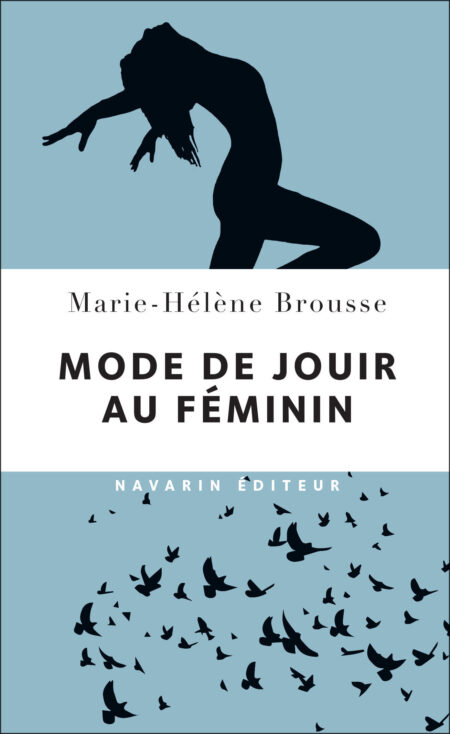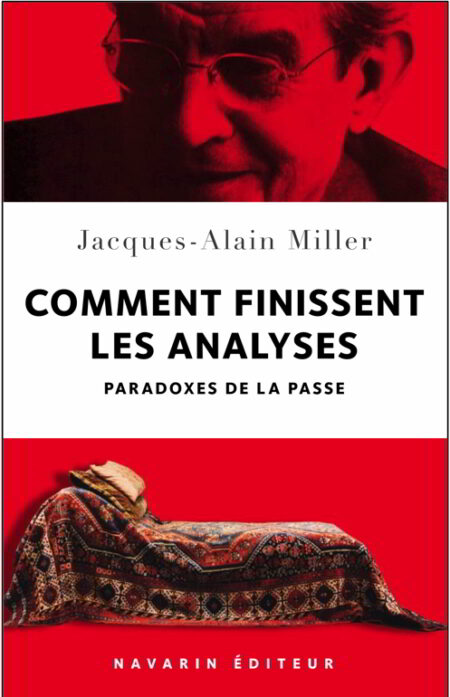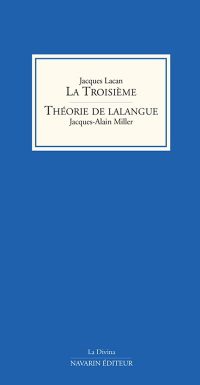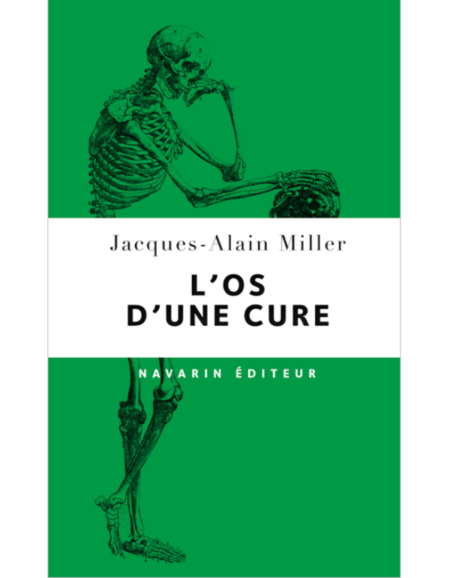Description
The Lacanian ReviewAbonnement avec réduction de -10% à -80%
Votre période d’abonnement, 1 an (2 numéros) ou 2 ans (4 numéros), commence avec le prochain numéro de TLR. Le premier numéro que vous recevrez après avoir commandé un abonnement est le prochain numéro à paraître. Tout abonnement souscrit après jusqu’au 01 Février 2024 débutera par le TLR n°15.
|
The Lacanian ReviewSubscribe now and save up to 80%.
|
About The Lacanian Review
The Lacanian Review is a semiannual print and digital journal published in English. TLR offers newly established texts by Jacques Lacan, Jacques-Alain Miller, and prominent international figures of the Lacanian Orientation.
This series features testimonies of the pass, new theoretical developments in Lacanian psychoanalysis, dialogues with other discourses, and articles on contemporary culture, politics, art and science.
Each issue explores a theme intersecting the symptoms of our era and emerging work in the New Lacanian School (NLS) and the World Association of Psychoanalysis (WAP).
The Lacanian Review 15 : « Cut »
February 2024
In my Rapid Eye Movement sleep, I dreamt the song lyrics: It’s the end of the world as we know it . . . It’s the end of the world as we know it . . . and I feel fine.
What is the status of the world today? Doomed? Or is everything just fine? Although The Lacanian Review 15 was brought out by the climate crisis as a particular paradigm or symptom of discontent in the world today, we also examine various other forms of twenty-first century anxiety and malaise.
Amidst utopian fantasies, ideals of progress, war, discourses of catastrophe and impending doom, and fictions of the end of the world, what is the place of psychoanalysis? Within those, perhaps all we can do is make a cut. Hence, the title for TLR 15: “Cut.” Short and simple, to function as a cut in itself.
Inherent in the image of the globe is an imaginary form of wholeness, and yet various events and contingencies puncture that belief in the bubble, in particular, the climate crisis. Insofar as the world is constructed—“this world that is but a dream of each body,” Jacques Lacan says—cuts can perforate the imaginary, perhaps just enough to allow us to see that the world is always only ever, as the R.E.M. song says:
. . . the world as we know it . . .
Inevitably, any attempt to make a world confronts us with waste. Lacan’s equivoque im-monde has contemporary resonance: the world (monde) is polluted (immonde). From the letter as waste or remainder, outside of meaning, to waste as a form of the real in the twenty-first century . . . We explore the complexity of waste: the risks of a subject identified with waste, and yet the potential of this very thing—finding a way to do something with, and even, as Jacques-Alain Miller proposes, elevate to the dignity of a practice, this waste object.
Lacanian cuts are distinctive. And they can be on the side of life. Stemming from the desire of the analyst and through a horticulture of analytic action, rooted in an ethics, cuts can be life-generating. It is perhaps ironic that precisely by way of demonstrating the very impossibility of living, psychoanalysis can also make it possible to find a way to make the world—each one’s singular world—a bit more livable.
Cristina Rose Moro, Managing Editor
The Lacanian Review 15 : « Cut »
CONTENTS
Editorial
Cyrus Saint Amand Poliakoff, The Toric Universe
Cristina Rose Moro, Cut
Death Dream
Jacques Lacan, Improvisation désir de mort, rêve et réveil
Jacques Lacan, Improvisation: Desire for Death, Dream and Awakening
Neighborhood
Jacques-Alain Miller, L’amour du prochain Saint Martin et Salomon
Jacques-Alain Miller, The Love of One’s Neighbor, Saint Martin and Solomon
Jacques-Alain Miller, Conspiracy
Im-monde
Guy Briole, The Dignity of Waste
Éric Laurent, Climate Catastrophe, the Anxiety of Scientist Scholars and the Anxiety That is Ours
Geert Hoornaert, Residual, You Say?
Jacques-Alain Miller, Some Remarks on Climate Catastrophe
Guy Briole, The Inexorable Logic of War
Jacques-Alain Miller, Some Remarks on the Logic of War
Civilization and Anxiety
Daniel Roy, Anxiety and Treatment
Patricia Bosquin-Caroz, Believing in It
Réginald Blanchet, Living in Catastrophe
Katty Langelez-Stevens, Conspiracy Theories: Holding On to the Compass of the Real
Neus Carbonell, Being a Body, Being a Symptom
Jacques-Alain Miller, Some Remarks on Being a Body
Spheres
Natalie Wülfing, Making a World
Luc Garcia, CO2 Mon Amour
Dominique Rudaz, Is Bitcoin for Real?
Nature / Cut
Robert Buck, Nature / Cut
Donald Moffett, Artist Folio
Jim and Lucia LaVilla-Havelin, Dear René
Paulina Pobocha, Donald Moffett + Nature Cult + The McNay
Jeff Goodell, Why We Love Our Oak Tree
Eileen Myles, RE: Tree Canopy
Marlene McCarty, Earth Life
Grant Worth, Heirloom Mixtape
James Corwell, Exploring the Future of Food: A Global Perspective on the Grapes of Wrath
Rachel Monroe, Ghost Variation
Pete Dandridge, Flight
Suzanne Weaver, The Future Is Undecided
Brett Story, Canary on the Skull
Hannah Fenster, Assertive, but Full of Holes
Lidia Yuknavitch, Neuron
Tenzin Robert Thurman, The Nature Cult Picnic of Donald Moffett
Luna and Coyote, Welaunee Is Our Nature-Cult
Elizabeth Rogers, Open
